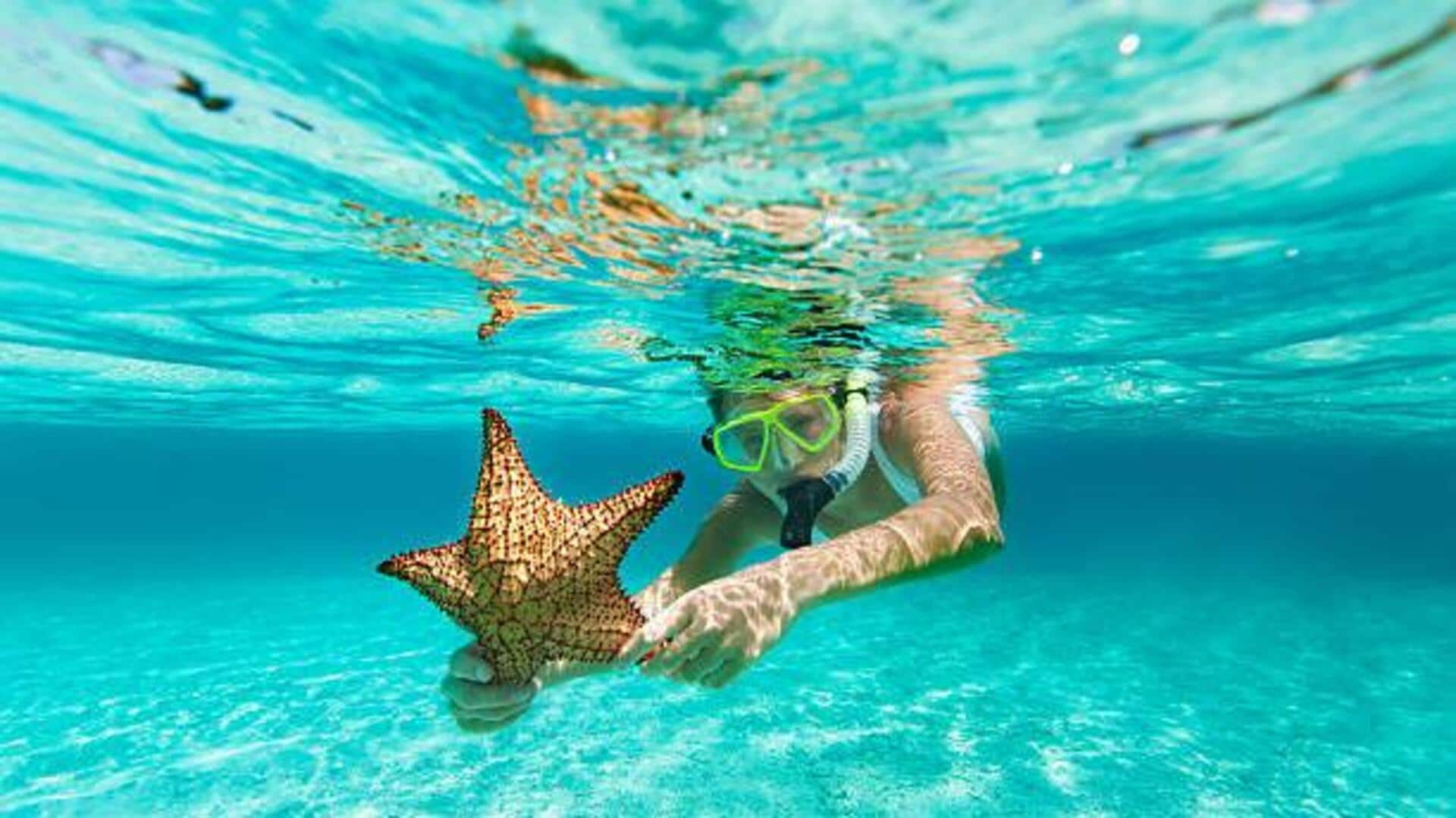
Snorkeling escapes: Where to find the most stunning coral reefs
What's the story
Snorkeling over colorful coral gardens in secluded coastal coves gives a unique opportunity to explore underwater ecosystems.
These hidden gems offer a peaceful environment, away from crowded tourist spots, letting snorkelers witness the beauty of marine life up close.
The experience is both educational and exhilarating, as one can observe various species of fish and coral formations.
Here's all you need to know about snorkeling in these tranquil settings.
Location selection
Choosing the right cove
Picking the right cove is the key to a fun snorkeling experience.
Look for places famous for crystal clear waters and rich biodiversity.
You can either research online or speak to local guides to discover coves that are lesser crowded but still provide mind-blowing underwater views.
Keep factors like accessibility, safety, and weather conditions in mind while picking the destination.
Equipment checklist
Essential gear for snorkeling
Having the right gear makes sure that you have a safe and enjoyable snorkeling experience.
Essential items include a well-fitting mask, snorkel, fins, and a wetsuit (if required for colder waters).
Consider investing in an underwater camera to capture memories of your adventure.
Check all equipment for functionality before heading out to avoid any issues while in the water.
Respectful interaction
Understanding marine life etiquette
When snorkeling over coral gardens, it's important to respect marine life and their homes.
Avoid touching or stepping on corals, as they're fragile ecosystems that take years to grow.
Maintain a safe distance from marine animals and refrain from feeding them, as it can disrupt their natural behavior.
Following these guidelines helps preserve these beautiful environments for future generations.
Precautionary measures
Safety tips while snorkeling
Safety has to be paramount while snorkeling at secluded coves.
Always snorkel with a buddy, and let someone on land know your whereabouts before heading into the water.
Be mindful of currents and tides, which may change quickly; stay close to shore if you are not familiar with local conditions.
Always carry a whistle or signaling device in case of emergencies.